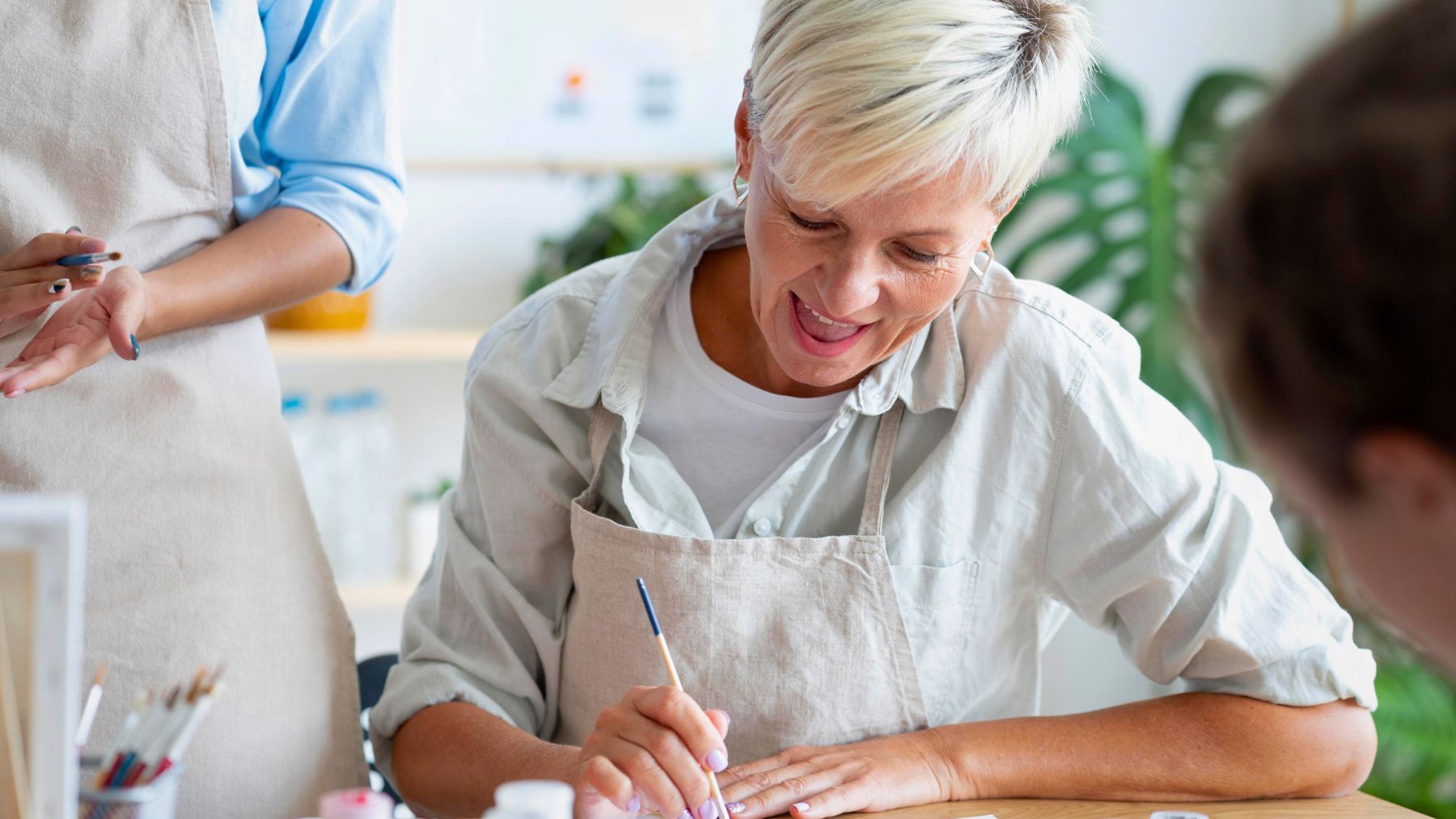Reading clubs, crosswords, and puzzles get a lot of credit when it comes to keeping the brain active. But there’s another hobby—less talked about—that also supports focus, memory, and fine motor coordination. It’s relaxing, creative, and easy to learn at any age.
We’re talking about crocheting, an activity that engages your hands and your mind at the same time. In the following sections, we’ll look at the benefits of crocheting for people over 65, and how to get started with it, even if you’ve never held a hook before.
Crocheting: the top hobby for your brain and body after 65
Crocheting combines gentle, repetitive hand movements with counting, pattern recognition, and problem-solving. That combination helps stimulate both mental focus and hand-eye coordination. It also offers an advantage against other hobbies: visible progress. Stitch by stitch, you see your work grow, and that sense of building something can be deeply satisfying.
For seniors, crocheting can offer both physical and emotional benefits. Studies have shown that it may help lower blood pressure, calm the nervous system, and even reduce chronic pain by shifting your focus. It’s also been associated with delaying the progression of cognitive decline, as it requires attention, memory, and coordination.
Mentally, the rhythm of stitching is calming, almost meditative, helping with stress, anxiety, and low mood. It gives your hands something to do while your mind slows down. Similar to walking or listening to soft music, it provides a sort of break for your brain.
Besides, it’s a hobby that can help combat isolation in a natural, low-pressure way. You can join a local crochet group or take part in online crochet-alongs and forums. These spaces offer shared purpose and conversation, making it easier to connect with others. Even casual chats about yarn, patterns, or progress can create a sense of belonging and routine
How can seniors get started with crocheting
If you’re curious about crocheting, it’s easy to begin. You just need a few basic materials and a bit of patience. Follow these tips:
- Start with a simple hook and medium-weight yarn: Size H or I hooks are a good place to begin. Look for soft, light-colored yarn that’s not too thin. It’s easier to handle and to see your stitches.
- Find a beginner tutorial or pattern: YouTube has plenty of slow, step-by-step videos for first-timers. You can try a beginner-friendly pattern for something small, like a dishcloth or scarf.
- Practice a few basic stitches: Learn the chain stitch, single crochet, and double crochet. That’s enough to start creating real projects and build confidence.
- Don’t worry about speed or perfection: Crocheting is about the process, not how fast or flawless it looks. Mistakes are part of learning, and they’re easy to fix.
- Join a local or virtual group: Check your library, senior center, Facebook, or websites for groups where you can meet others who crochet. Sharing progress or asking for tips adds to the enjoyment.
Crocheting offers a calm, hands-on way to stay sharp and relaxed during your retirement years. Whether you’re looking for a new hobby or something meaningful to keep your mind and hands engaged, it’s a skill that can bring satisfaction and purpose.

